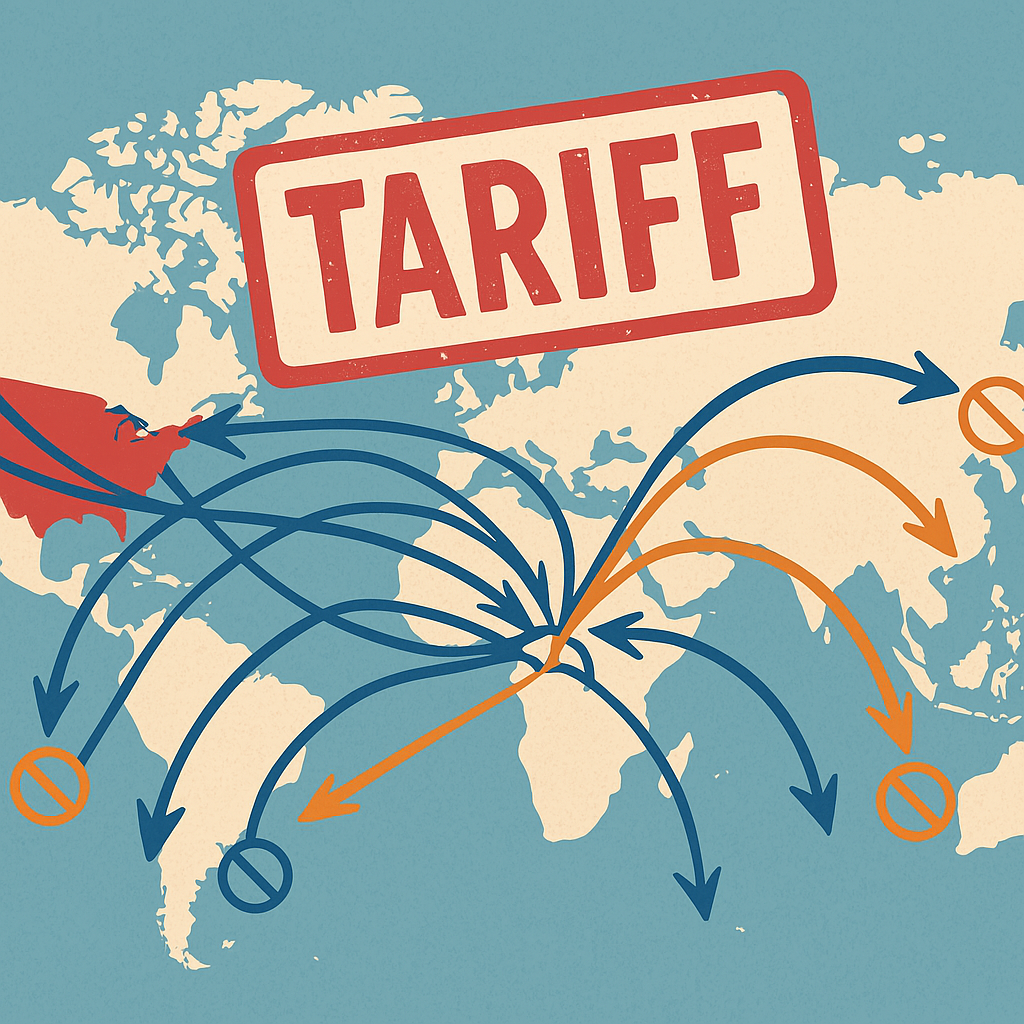❓ Trump Tariff Policy and U.S. Economy in 2025: What’s the Real Impact?
Trump tariff policy and its impact on the U.S. economy remain hotly debated in 2025. New tariff policy and the U.S. economy remain at the center of debate in 2025. His bold push to “Make America Great Again” through tariffs sparked renewed questions: Are tariffs protecting U.S. industries, or are they hurting American consumers? And what does this mean for the future of global trade and domestic growth?

🇺🇸 How Trump Tariff Policy Shapes the U.S. Economy Structure
The U.S. economy is largely consumption-driven. That matters because when you apply trade restrictions like tariffs, they ripple through the entire system—affecting both supply chains and consumer behavior.
🛋️ Consumer Spending Powers Growth
Domestic demand is the primary engine of growth. When American consumers spend, companies expand and jobs follow.
🚚 Heavy Dependence on Imports
As the world’s largest consumer market, the U.S. imports a vast range of affordable goods—often from China and Mexico. These imports have historically kept costs low for households.
💸 Value Through Import Consumption
Instead of exporting its way to prosperity, the U.S. economy thrives on importing affordable goods and fueling demand at home. This model shaped decades of economic growth.
🌟 What Trump’s Tariff Policy Aimed to Do
Trump’s tariff policy and U.S. economy strategy were guided by three primary goals:
💳 Shrink the Trade Deficit
Imposing tariffs on foreign goods—especially from China—was meant to reduce trade imbalances and encourage domestic alternatives.
🏢 Revive U.S. Manufacturing
Tariffs were seen as a lever to bring back factories and jobs. By making foreign goods more expensive, local producers could become more competitive.
🏆 Protect American Companies
Trump’s administration argued that unfair trade practices—like forced tech transfers—warranted firm countermeasures, including aggressive tariffs.
Trump Tariff Policy: What’s at Stake in 2025?
📊 How the Trump Tariff Policy Affected the U.S. Economy
According to a Brookings Institution study, Trump’s tariff policy had mixed results:
⚠️ Prices Increased
Tariffs raised the cost of everyday items—from electronics to clothing. American consumers absorbed most of these increases.
🏗️ Short-Term Factory Gains
Some manufacturing jobs returned, and U.S. firms gained initial momentum. But supply chain challenges and labor costs limited long-term success.
🌍 Global Trade Tensions
China, Mexico, and the EU retaliated with their own tariffs, creating disruption and uncertainty in trade relations.
⚖️ Final Verdict: Short-Term Win or Long-Term Risk?
The Trump tariff policy and U.S. economy remain tightly linked—and the debate is far from over. On one hand, tariffs offered political wins and symbolic strength. On the other, they drove up consumer prices, shook trade partnerships, and didn’t fully revive U.S. manufacturing.
For long-term prosperity, the U.S. may need a strategy that blends domestic industrial revival with global trade cooperation—not isolation.
📘 Glossary
Supply Chain – The network involved in producing and delivering goods.
Tariff – A tax on imported goods. Often used to protect local industries.
Trade Deficit – When a country imports more than it exports.
Retaliatory Tariff – A counter-tariff imposed in response to another country’s trade restrictions.
Want to know how to prepare your investment?
📚Read Unlock 2025: How U.S. Stock Market Strategies Will Thrive Amid Tariffs And Global Change
📚 For a detailed analysis on global tariffs and their economic effects, see the World Trade Organization’s tariff overview.
